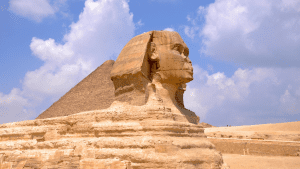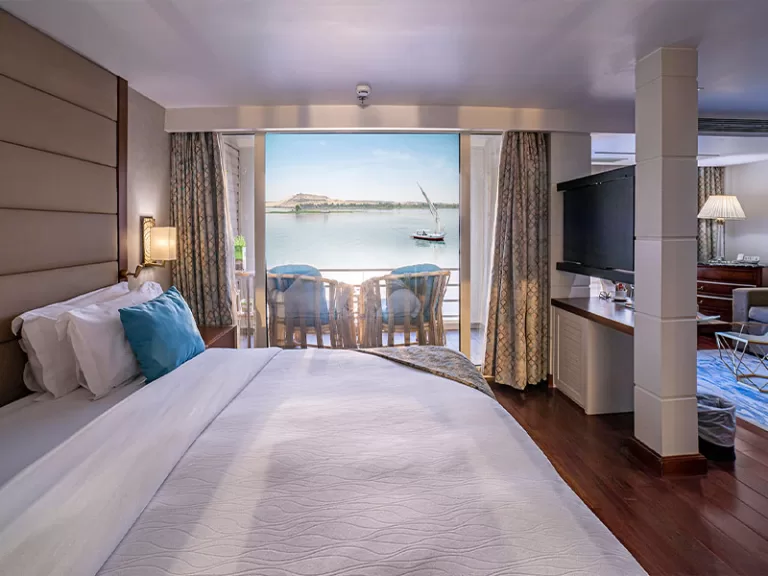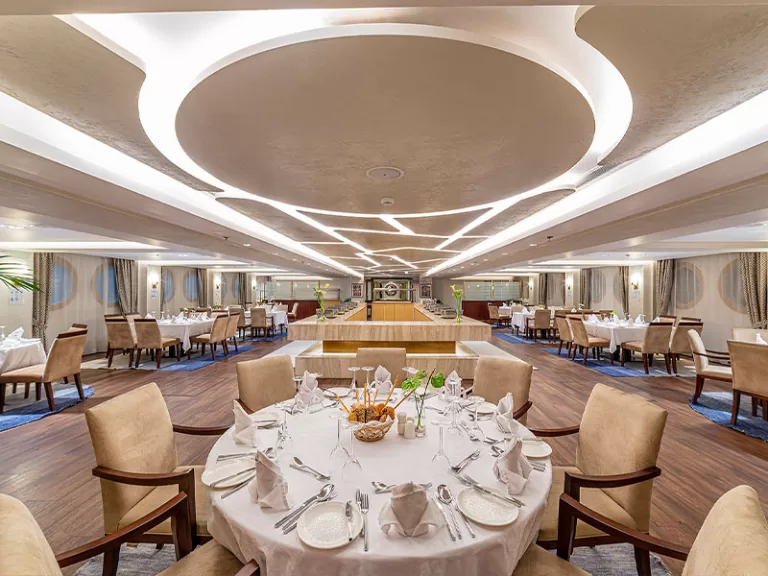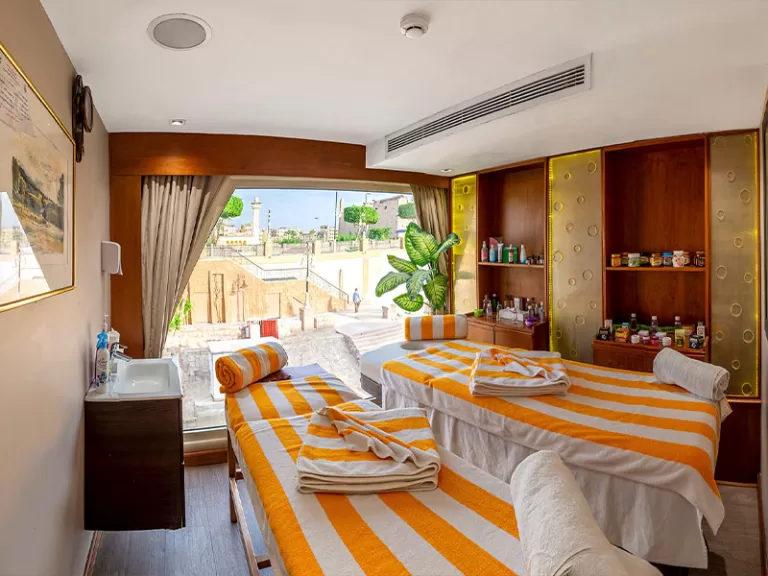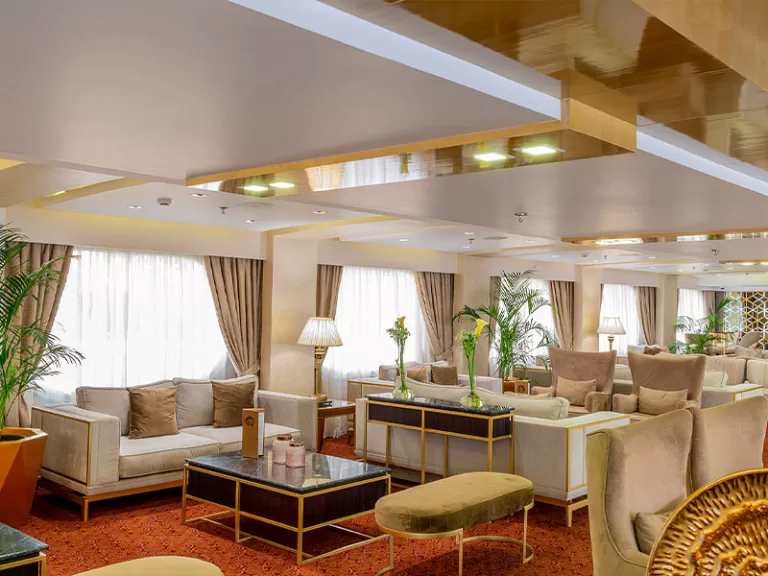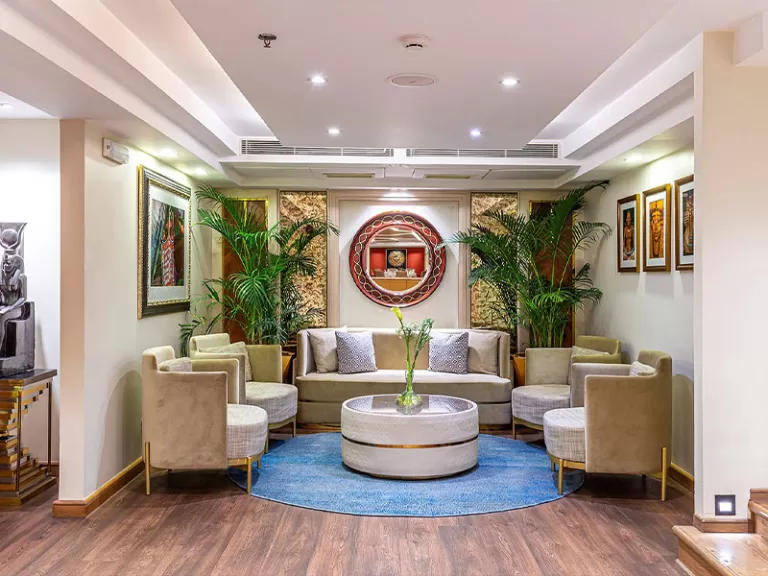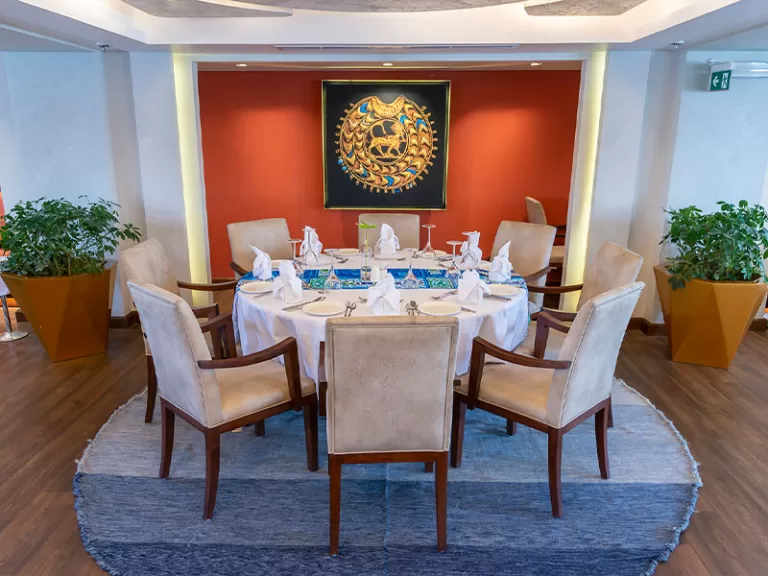
Home » Weekly Blog » Unearthing Egypt’s Hidden Treasures: An Exclusive Tour of Luxor’s Temples and Tombs with Ancient Navigator
Unearthing Egypt’s Hidden Treasures: An Exclusive Tour of Luxor’s Temples and Tombs with Ancient Navigator
Table of Contents
Introduction
Step into a world where time stands still and ancient secrets come to life. Luxor, often heralded as the world’s greatest open-air museum, is a place where history and mythology intertwine in the most breathtaking ways. Imagine walking through colossal temple complexes, their towering columns and intricate hieroglyphs whispering tales of gods and kings. Picture yourself descending into the shadowy depths of tombs, where vivid frescoes and golden artifacts reveal the grandeur of Egypt’s illustrious past.
This is not a mere fantasy but the reality awaiting you on an exclusive tour with Ancient Navigator. Specializing in crafting unforgettable experiences, Ancient Navigator takes you beyond the typical tourist routes to uncover the true essence of Luxor’s ancient wonders. Whether it’s the majestic Karnak Temple with its labyrinth of sanctuaries, the enigmatic Valley of the Kings holding the final resting places of pharaohs, or the lesser-known but equally mesmerizing Temples of the Nobles, every corner of Luxor tells a story.
In this blog post, we’ll delve into the heart of Luxor’s historical treasures, exploring the unique opportunities offered by Ancient Navigator. Prepare to be enchanted as we guide you through the ancient marvels that await, offering insights and access that turn every visit into a journey through time.
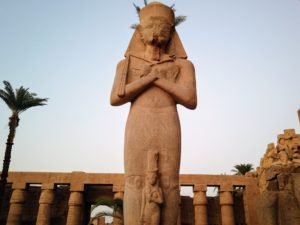
The Majesty of Luxor's Temples
Karnak Temple Complex
Luxor’s grand adventure begins at the Karnak Temple Complex, a sprawling architectural wonder that stands as a monumental testament to ancient Egypt’s religious and cultural significance. Spanning over 100 hectares, Karnak was the largest and most important religious site in ancient Egypt, dedicated primarily to the god Amun, along with other deities like Mut and Khonsu.
As you step into Karnak, you are greeted by the Great Hypostyle Hall, a colossal space that captivates with its 134 towering columns. Each column, adorned with intricate carvings and hieroglyphs, tells stories of gods and pharaohs. The sheer scale of the hall, with its towering pillars and vast open spaces, creates an almost otherworldly atmosphere. Ancient Navigator’s expert guides enhance this experience by providing detailed explanations of the symbolism and historical context behind these magnificent structures. You’ll learn about the ritualistic significance of the hall and how it served as a focal point for religious ceremonies and festivals.
Wandering further into the complex, you’ll encounter the Sacred Lake, an expansive body of water that once played a crucial role in purification rituals. The lake’s serene surface reflects the grandeur of the surrounding architecture, offering a peaceful respite from the temple’s bustling activity. Ancient Navigator’s tours often include special access to less-visited areas of the complex, providing unique vantage points and deeper insights into the temple’s history and construction.
One of the highlights of Karnak is the Obelisk of Hatshepsut, a towering stone monument that stands as a tribute to one of Egypt’s most remarkable female pharaohs. Erected by Queen Hatshepsut, this obelisk is adorned with inscriptions celebrating her reign and divine status. Ancient Navigator’s guides share fascinating stories about Hatshepsut’s achievements and her role in the temple’s history, offering a richer understanding of her legacy.
Luxor Temple
A short journey from Karnak brings you to the Luxor Temple, an architectural masterpiece that served as a major religious and ceremonial center in ancient Egypt. Unlike the sprawling Karnak, Luxor Temple is renowned for its elegant and compact design. It was constructed primarily during the reign of Ramses II and was closely linked to the Opet Festival, a grand celebration that marked the rejuvenation of the king and the divine union of Amun with the people.
The entrance to Luxor Temple is marked by the majestic Avenue of Sphinxes, a grand processional path lined with sphinx statues that once connected the temple to Karnak. As you stroll along this avenue, you’ll be immersed in the grandeur of ancient Egyptian religious parades and processions. Ancient Navigator’s tours provide exclusive access to the stories and significance of these statues, enriching your understanding of their symbolic importance.
At the temple’s entrance, the colossal statues of Amenhotep III, known as the Colossi of Memnon, stand as silent sentinels. These imposing figures, once flanking the entrance to Amenhotep’s mortuary temple, are now a fascinating historical artifact. Ancient Navigator’s guides share intriguing details about these statues, including their role in ancient Egyptian rituals and their mysterious weathering over the centuries.
Inside Luxor Temple, you’ll discover the Temple Sanctuary, a sacred space where the divine presence was believed to reside. The walls are adorned with intricate carvings depicting the divine acts of Ramses II and other notable figures. Ancient Navigator’s expert guides offer deep insights into these reliefs, explaining their religious and historical significance.
Ancient Navigator’s exclusive tours of Luxor Temple often include special behind-the-scenes access, allowing you to explore areas not typically open to the public. This unique access provides a more intimate and comprehensive experience, deepening your appreciation for the temple’s architectural and historical marvels.
Exploring the Valley of the Kings
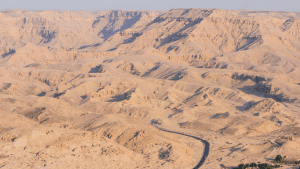
The Tombs of Pharaohs
No exploration of Luxor is complete without a visit to the Valley of the Kings, the legendary burial ground of Egypt’s most powerful pharaohs. This awe-inspiring necropolis, carved into the limestone cliffs on the west bank of the Nile, served as the final resting place for over 60 kings and nobles from the New Kingdom period. Each tomb, intricately designed and lavishly decorated, reflects the grandeur and spiritual beliefs of ancient Egypt.
One of the most renowned tombs in the Valley is that of Tutankhamun, famously discovered by archaeologist Howard Carter in 1922. Despite its modest size compared to other royal tombs, the tomb of the “boy king” captivated the world with its treasure trove of artifacts, including the iconic gold mask of Tutankhamun. This discovery provided unprecedented insights into the burial practices and daily life of ancient Egypt. Ancient Navigator’s tours offer an exclusive chance to delve into the significance of Tutankhamun’s tomb, with guides providing detailed explanations of its treasures and the stories behind each artifact.
Another notable tomb is that of Ramses VI, renowned for its elaborate decorations and intricate inscriptions. The walls of Ramses VI’s tomb are adorned with vivid scenes depicting the king’s journey through the afterlife, including the weighing of the heart and the various deities he encounters. These rich and detailed artworks offer a glimpse into the spiritual beliefs and artistic achievements of the time. Ancient Navigator’s tours include expert commentary on the symbolism and craftsmanship of these frescoes, offering a deeper understanding of their cultural and historical context.
The Valley of the Kings is also home to other fascinating tombs, such as those of Seti I and Thutmose III. Seti I’s tomb is renowned for its stunning paintings and elaborate layout, while Thutmose III’s tomb is known for its innovative architectural features. Ancient Navigator’s tours provide special access to these and other less-visited tombs, allowing you to explore a broader range of royal burials and gain a more comprehensive view of the Valley’s historical significance.
Tomb of Nefertari
Among the Valley’s most exquisite sites is the Tomb of Nefertari, the final resting place of Queen Nefertari, the beloved wife of Ramses II. Often considered one of the most beautiful tombs in Egypt, Nefertari’s final resting place is renowned for its stunningly preserved artwork and elaborate decorations.
The tomb’s walls are adorned with vibrant frescoes that depict Nefertari in various divine and ceremonial scenes. The artwork, characterized by its rich colors and intricate details, offers a rare glimpse into the queen’s life and her exalted status. The quality of the paintings and the beauty of the tomb’s interior make it a standout example of ancient Egyptian artistry and funerary practices. Ancient Navigator’s tours offer exclusive insights into the symbolism and significance of these artworks, providing a deeper appreciation of Nefertari’s role and the craftsmanship involved.
Ancient Navigator’s unique access to the Tomb of Nefertari includes detailed explanations from knowledgeable guides who shed light on the historical and cultural aspects of the tomb. This exclusive access allows for a more intimate and informative experience, enriching your visit to one of Egypt’s most remarkable burial sites.
Exploring the Valley of the Kings with Ancient Navigator not only unveils the magnificence of these ancient tombs but also offers a profound connection to the grandeur of ancient Egyptian civilization. The combination of expert guidance, exclusive access, and detailed storytelling ensures that your journey through the Valley of the Kings is both enlightening and unforgettable.
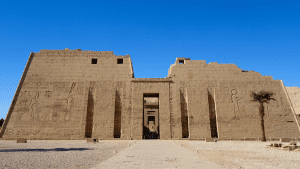
The Temples of the Nobles
Medinet Habu
As you venture beyond the well-trodden paths of Luxor’s grand temples, Medinet Habu emerges as a hidden gem of ancient Egyptian architecture and artistry. Situated on the west bank of the Nile, Medinet Habu is the mortuary temple of Ramses III, one of the last great pharaohs of the New Kingdom. Unlike the more frequently visited temples, Medinet Habu offers a glimpse into the grandeur and complexities of Ramses III’s reign and is often less crowded, providing a more serene and intimate experience.
The temple’s walls are adorned with elaborate reliefs and inscriptions depicting Ramses III’s military victories and divine rituals. The vivid scenes offer a fascinating narrative of the king’s achievements, including his successful campaigns against the Sea Peoples—a coalition of maritime raiders who threatened Egypt’s stability. As you explore these reliefs, Ancient Navigator’s guides provide detailed explanations of the historical context and the symbolic meaning behind the artwork, enriching your understanding of the king’s legacy.
The architectural layout of Medinet Habu is also noteworthy. The temple’s vast courtyards, towering columns, and intricately decorated pylons create a sense of awe and majesty. One of the most striking features is the Ramesside colonnade, which showcases the monumental scale of Ramses III’s architectural ambitions. Ancient Navigator’s tours often include special access to less-visited areas of the temple, allowing you to appreciate the full scope of its design and artistry.
In addition to its architectural and artistic significance, Medinet Habu holds an important place in the study of ancient Egyptian religion. The temple complex includes several smaller chapels dedicated to various deities, and its design reflects the intricate relationship between religion and statecraft in ancient Egypt. Ancient Navigator’s guides offer insights into these religious aspects, providing a comprehensive understanding of the temple’s role in both the spiritual and political life of ancient Egypt.
Ramesseum
A short distance from Medinet Habu lies the Ramesseum, another remarkable temple complex built by Ramses II, one of Egypt’s most illustrious pharaohs. The Ramesseum, dedicated to the god Amun and Ramses II himself, stands as a testament to the king’s architectural prowess and religious devotion.
The temple is renowned for its colossal statues and monumental architecture. One of the most famous features of the Ramesseum is the massive statue of Ramses II, once standing at the entrance to the temple. Although now in ruins, the remnants of this colossal figure—often referred to as the “Rameses” or “Ozymandias” statue—continue to evoke awe and admiration. Ancient Navigator’s tours provide detailed information about the statue’s significance and the artistic techniques used in its creation.
The Ramesseum’s walls are adorned with extensive reliefs and inscriptions that depict Ramses II’s military campaigns, religious ceremonies, and divine interactions. These detailed artworks offer a glimpse into the king’s achievements and his relationship with the gods. Ancient Navigator’s guides offer in-depth explanations of these scenes, providing a richer understanding of the historical and religious context.
The temple complex also includes several smaller chapels and sanctuaries dedicated to various deities. These chapels, often richly decorated with intricate carvings and paintings, reflect the religious practices and beliefs of the time. Ancient Navigator’s tours often include special access to these lesser-known areas, allowing you to explore the full extent of the Ramesseum’s religious significance.
Visiting the Ramesseum with Ancient Navigator offers a unique opportunity to experience one of Egypt’s most impressive temple complexes in a more personalized and informative way. The combination of expert guidance, exclusive access, and detailed storytelling ensures that your visit to the Ramesseum is both enlightening and memorable.
The Modern Luxor Experience
Cultural Immersion
Luxor is not just a destination for exploring ancient wonders; it is also a vibrant city that offers a rich tapestry of contemporary Egyptian culture. A visit with Ancient Navigator ensures that you experience the essence of modern Luxor alongside its historical treasures.
One of the highlights of a cultural immersion in Luxor is engaging with the local community. Ancient Navigator’s tours often include visits to bustling markets where you can interact with local artisans and vendors. These markets, such as the Luxor Souk, are brimming with colorful crafts, textiles, and spices. Here, you’ll have the opportunity to observe traditional Egyptian craftsmanship, from hand-woven carpets to intricate jewelry, and even purchase unique souvenirs that capture the spirit of Luxor.
In addition to market visits, Ancient Navigator provides opportunities to experience local cultural traditions. Whether it’s attending a traditional dance performance, enjoying folk music, or participating in a cooking class that teaches you how to prepare classic Egyptian dishes, these experiences offer a deeper connection to the region’s cultural heritage. For instance, you might find yourself watching a vibrant folkloric dance performance that showcases traditional Egyptian rhythms and costumes, or learning to make dishes like koshari and falafel, which are staples of Egyptian cuisine.
Cuisine
Luxor’s culinary scene is a delightful adventure in itself. Egyptian cuisine is renowned for its bold flavors, rich textures, and diverse ingredients, and Luxor offers a range of dining experiences that cater to all tastes. Ancient Navigator ensures that your gastronomic journey is as memorable as your exploration of ancient sites.
One of the culinary highlights is the opportunity to dine at local restaurants that offer authentic Egyptian dishes. From street food stalls serving up delicious falafel and shawarma to upscale restaurants featuring gourmet versions of traditional dishes, Luxor’s dining scene has something for everyone. Ancient Navigator’s tours often include meals at carefully selected establishments known for their quality and authenticity. Here, you can enjoy specialties like koshari, a hearty mix of rice, lentils, and pasta topped with a spicy tomato sauce, or try traditional Egyptian sweets such as basbousa and kunafa.
For a truly unique dining experience, consider enjoying a meal aboard a traditional felucca boat on the Nile. This relaxing cruise offers stunning views of Luxor’s landmarks while you savor a selection of local dishes prepared on board. The combination of delicious food and picturesque scenery creates a memorable dining experience that captures the essence of Luxor.
Accommodation
Ancient Navigator understands that a luxurious and comfortable stay is an essential part of your travel experience. Luxor offers a range of accommodation options, from elegant hotels to charming boutique lodgings, each providing a unique blend of modern comfort and traditional charm.
Luxury hotels in Luxor often feature stunning views of the Nile River, lush gardens, and opulent interiors. These properties offer top-notch amenities, including spa services, swimming pools, and fine dining restaurants. For instance, staying at a hotel with a view of the Nile allows you to unwind in style after a day of exploring ancient sites, with the river’s tranquil beauty providing a soothing backdrop.
Boutique accommodations in Luxor offer a more intimate and personalized experience. These smaller establishments often reflect local architectural styles and provide a cozy, home-like atmosphere. Many boutique hotels are located in central areas, making it easy to explore Luxor’s markets and cultural attractions.
Ancient Navigator’s selection of accommodations ensures that your stay in Luxor is both comfortable and convenient, allowing you to relax and recharge between your explorations of the city’s historic wonders. The combination of luxurious amenities, attentive service, and thoughtful details enhances your overall travel experience, making your visit to Luxor as enjoyable as it is unforgettable.
Conclusion
Luxor stands as a timeless gateway to the ancient world, where the grandeur of Egypt’s pharaohs and the mysteries of their civilizations come vividly to life. With its colossal temples, intricately decorated tombs, and the breathtaking beauty of its historical sites, Luxor offers an unparalleled travel experience that immerses you in the rich tapestry of ancient Egyptian history and culture.
Ancient Navigator’s exclusive tours elevate this experience, providing access to the hidden treasures of Luxor with a level of detail and personalization that transforms each visit into a journey through time. From the majestic columns of Karnak Temple and the enigmatic tombs of the Valley of the Kings to the lesser-known but equally awe-inspiring sites like Medinet Habu and the Ramesseum, every corner of Luxor reveals stories of divine grandeur and royal intrigue.
As you explore the magnificent Karnak Temple, where the Great Hypostyle Hall echoes with the legacy of ancient rituals, and wander through the Valley of the Kings, discovering the final resting places of legendary pharaohs, Ancient Navigator ensures that each step is enriched with expert guidance and exclusive insights. The tomb of Tutankhamun and the vibrant frescoes of Nefertari’s tomb become more than mere historical sites; they transform into immersive experiences that connect you with the soul of ancient Egypt.
Beyond the temples and tombs, Luxor’s modern vibrancy adds another layer to your journey. Engage with local traditions, savor the flavors of Egyptian cuisine, and experience the warmth of Egyptian hospitality. Whether you’re strolling through bustling markets, enjoying a traditional meal, or relaxing in luxurious accommodations, Ancient Navigator ensures that every aspect of your stay complements the grandeur of your historical explorations.
Luxor is not just a destination; it is a realm where history, culture, and personal discovery converge. Ancient Navigator invites you to step into this extraordinary world and uncover its secrets in ways that few others can. Book your exclusive tour today and embark on an unforgettable adventure that promises to leave you with lasting memories and a profound appreciation for the timeless wonders of Luxor.
The ancient world of Egypt is ready to reveal its mysteries—are you ready to discover them? Join Ancient Navigator and experience the unparalleled magic of Luxor, where every moment is a step back in time and every discovery is a gateway to the past.







